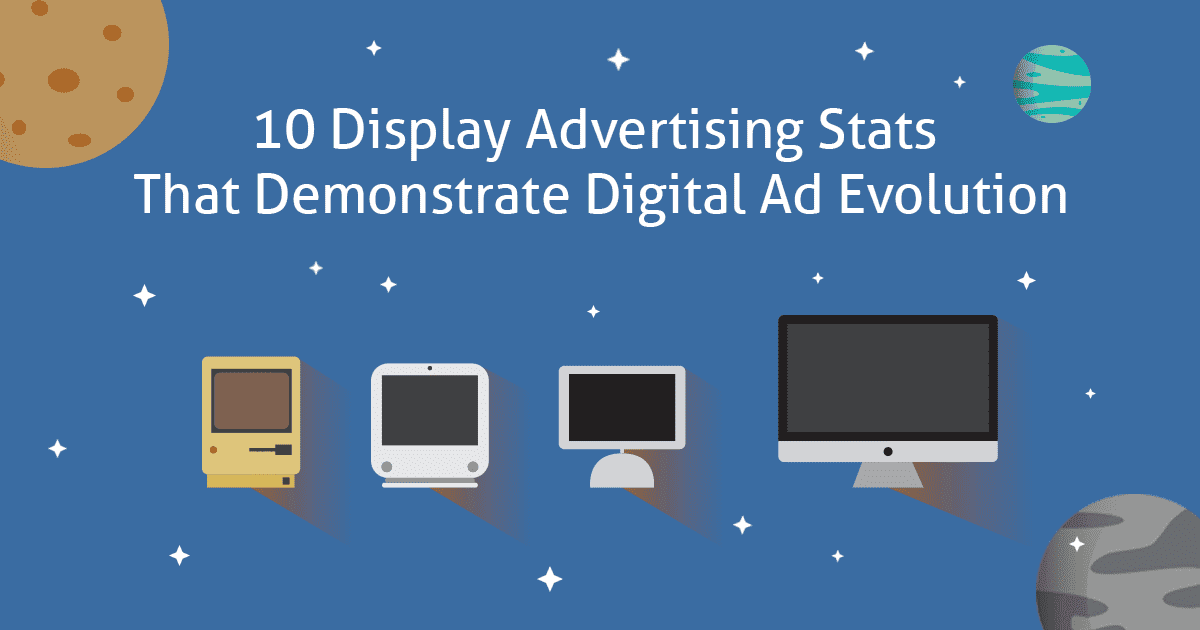Display advertising hasn’t always been a favorite in the world of digital marketing, nor did it make the prettiest of debuts.
Ads that lacked relevance weren’t interesting, and were, well—spammy (there, we said it!)—and they also didn’t create much of a fan base among marketers.
However, technology has made some major advancements, and in turn, so have display ads! This doesn’t completely fix the problem of spam, but there are sure are a lot more ways to create effective display ads.
To best understand the difference between good and bad display ads, it’s important to see how display advertising overall has evolved. Here, we’ve gathered some highlights and best practices for folding display ads into your overall inbound strategy.
What is Display Advertising?
The simplest definition of display advertising is “ads on a website.” No, really, we mean it! It could be a text ad, video or audio. It’s any ad that serves to monetize a website through traffic.
Display advertising then:
Like a lot of modern innovations, display advertising started as a crude process. It was driven largely by direct sales between the advertiser and website owner, on a cost per thousand basis. And here’s what happened: the ads weren’t always meaningful. They lacked context and felt a bit forced.
Website visitors began dismissing ads and becoming “blind” to what they were seeing—and it all became a bit meaningless. Today, we’ve made it to the other end of that spectrum. In fact, we’re still evolving.
Today advertisers can send out contextual advertisements due to real-time bidding technologies and sophisticated ad exchanges. Targeting is refined, leading to relevant content.
Display advertising today:
At the same time, native advertising and retargeting strategies have taken flight. The result: display ads are making a comeback in a big way.
10 Stats Showing How Far Display Advertising Has Come
1. Overall average click rate for all types of display ads is 0.17%!
2. About 200 million Internet users have installed ad blocking software.
3. More than two-thirds of U.S. digital display ad spending is programmatic.
4. The most popular display ad types are “banners and other,” which includes native ads and social media ads.
5. Social media advertising spending has doubled worldwide over the past 2 years, from $16 billion U.S. in 2014 to $31 billion in 2016.
6. Ad fraud is expected to exceed $50 billion globally by 2025, coming in second to the drug trade.
7. Written content performs best in native ads according to 68% of the news media publishers.
8. Some publications claim that readers are spending the same amount of time on native ads as they are on editorial content.
9. Retargeted ads led to a 1046% increase in branded search after four weeks of retargeted ad exposure!
10. 44% of ad viewers feel native advertising is a less intrusive format, offering a better user experience.
How to Succeed in Display Advertising
Given how much display advertising has evolved, how can you achieve greater ROI?
Succeeding in display advertising requires a unique combination of staying up-to-date on marketing software, best practices and the vast number of channels displays ads now populate.
Here are a few best practice tips to keep in mind as you work to earn that click through:
Consider what you’re giving viewers in return for paying attention to your ad. Is it comedy? Is it a piece of useful information? Think of an ad as a type of exchange; the more you can focus on creating value for your audience, the better your return will be.
Be relevant. This takes into account contextual advertising, hitting viewers at the right time, and putting to use as much knowledge as you can about that viewer.
See a campaign through. While it’s a good practice to put the stops on a campaign if it’s flat out not performing, don’t give up too early. Changing creative and branding too often gives viewers a confusing experience and prevents you from building your brand.
Focus on your brand. You may be funny and you may be interesting, but if no one can recall what brand put out your ad, what’s the point? Above all things, put your brand front and center to create a memorable interaction.


